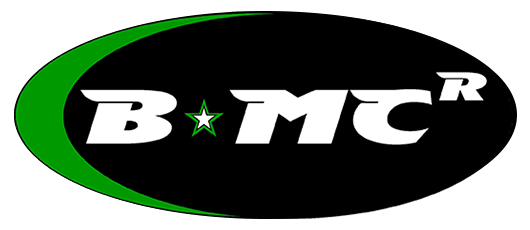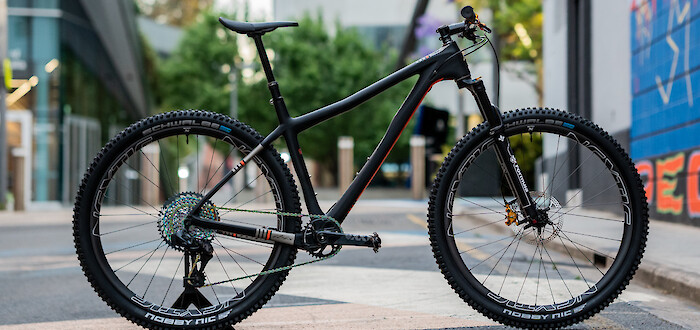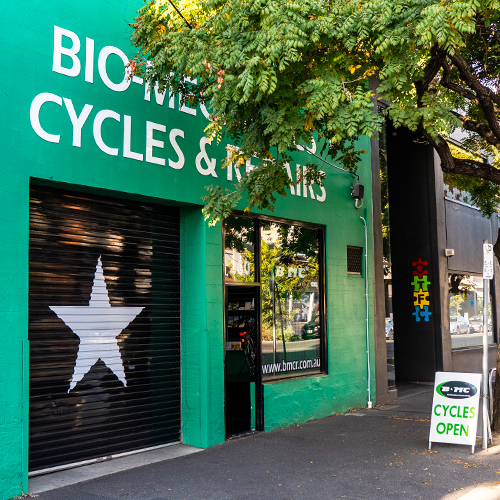A Cyclist's Guide To Foam Rolling


How to not hate foam rolling
If you ever want to see a professional athlete flinch, you only need one phrase: foam roller. *screaming internally*
Yes, this innocuous piece of equipment can bring even the most hardened sportsperson to their knees, but the good news is that there's no need to avoid it and miss out on all of its benefits.
The key to conquering the roller is knowing why you should foam roll, what you should foam roll, and, most importantly, how to foam roll effectively without wanting to scream. And we're here to help.
For this article, we're enlisting the help of our trusty expert in all things muscle- and fascia-related, Holly Hicks. Let's get stuck in!
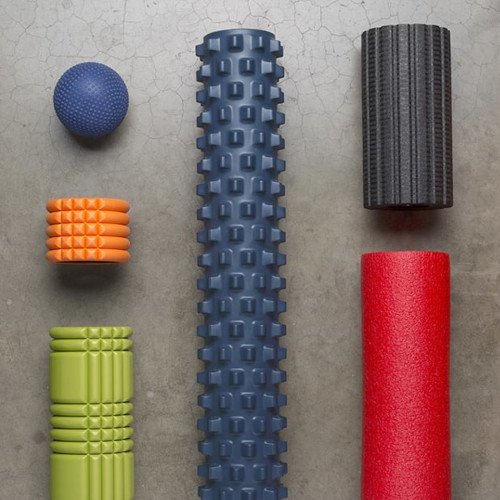
What is foam rolling?
Essentially, foam rolling is using an apparatus to release tension of the soft tissues -- your muscles, fascia, tendons, ligaments, etc.
In addition to the classic foam roller, you can also use things like trigger balls, massage balls, or massage guns (which are less scary than they sound).
Hot tip: don't use tennis balls. They can't take the pressure and -- as Holly discovered -- tend to, um, explode. #themoreyouknow
Why should you foam roll?
Foam rolling has numerous benefits. It helps relieve tight muscles, increases your range of motion, and addresses niggles before they become injuries. It also helps your muscles recover post-workout to avoid the dreaded delayed-onset muscle soreness, a.k.a. DOMS. (Ever struggled to walk down some steps the day after a solid workout? Yeah, you know what DOMS is.)
Basically, think of foam rolling as your secret weapon when it comes to effective recovery and injury prevention.

If it's so great, why don't people like doing it?
To be blunt, foam rolling can feel uncomfortable, especially if you're tight or sore. To be even more blunt, sometimes it can be brutal. (But we're going to show you how to avoid unnecessary pain, so hang in there.)
Let's face it -- like its partner in crime, stretching, it's also not as exciting as actually going for a ride, so it often gets relegated to the 'I'll do it later' basket...which usually means it never gets done.
Fun fact: when we used to do bike fittings, one of the questions we'd ask was, "Are you doing any regular stretching?" If we had a dollar for every time the answer was, "Well, I know I should be stretching...but I don't," we'd have, well, a butt-tonne of dollars.

I'm a cyclist, not a runner; do I really need to foam roll?
Oh, yes. Yes, you do.
Although cycling isn't a high-impact sport like running, it's a repetitive sport and still loads up your muscles and ligaments. Incorrect bike positioning, existing muscle imbalances and other factors can also make you more prone to injury. Foam rolling can help relieve these aches and pains plus protect against future problems. Trust us; it's a worthwhile investment of your time. Even if it's kind of boring. (Sorry.)
What parts do I need to foam roll?
As wonderful as it is to be able to roll your entire body, who's got that kind of time? To maximise your rolling sessions, cyclists and bike riders of all kinds should concentrate on the following areas.
Quadriceps
The quadriceps is the big muscle group at the front of the thigh. These guys help straighten the leg by extending the knee, and flex the hip when bringing your knee towards your chest. In short, the quadriceps group is responsible for most of your cycling workload.
Iliotibial Band (ITB)
This ITB is a dense, fibrous tissue which runs along the outside of the thigh and helps stabilise the knee joint. Yes, it's these guys again! Due to the bio-mechanical position of the body while cycling, this area is very susceptible to tightening up. It's rare to find a bike rider without ITB issues (especially if they've been neglecting the roller).
Gluteals
Glutes = butt muscles. This very powerful group helps stabilise the pelvis and maintain proper leg alignment. Combined with your hamstrings, they contribute to a significant amount of your power output when cycling.
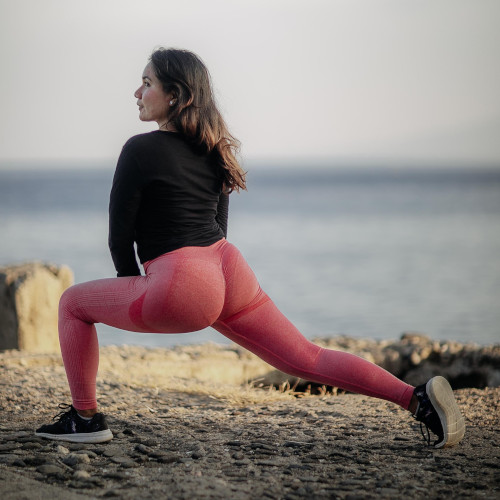
Hamstrings
This is the large muscle group at the back of the thigh. Hamstrings do the opposite to the quadriceps group -- they flex the knee to bend your leg and bring your heel towards your butt, and extend your hip to move your leg backwards.
Calves
The calves are the two-headed muscle at the back of the lower leg. The plantar flexes the foot to help you pedal.
Lia's remedial masseur had a move she dubbed 'splitting the calf head'. It's so intense that once Lia nearly clawed her way off the massage table. (The take-away: work on your calves before someone else does it for you.)
Thoracic
This is your upper back. You might not think it would get tight, but being bent over on a bike puts strain on this area -- as well as your neck -- so it's important to release it after a ride.
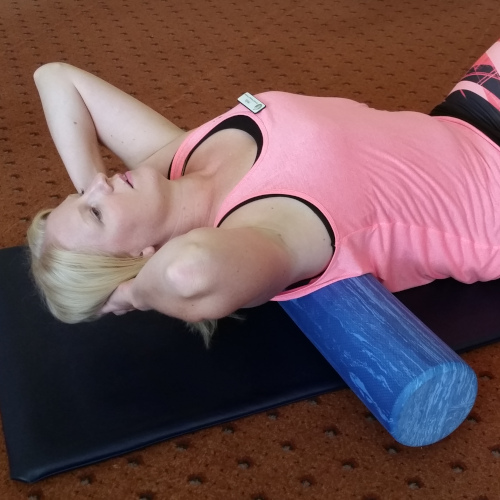
You've convinced me. So what's the best way to foam roll?
There are lots of videos on the interwebs about different rolling exercises, but what you really need to know is how to roll effectively. There's not much point flailing about and putting yourself through stress if it's not actually achieving anything.
Here are the golden rules.
Rule 1: Relax
The purpose of rolling is to release soft tissue tension. Soft tissue needs time to release, however, and when rolling, it needs to be relaxed, not tense. You can't be rolling so hard that you're inadvertently tensing the area you're working on. This will achieve nothing.
If you're rolling an area that hurts -- and, let's face it, there are a lot of areas that are going to hurt -- , reduce the pressure or weight on the roller until you can relax into the sensation rather than trying to commando-crawl across the floor away from it.

Rule 2: Slow down
Trying to get away with whacking on a 5-minute roll at the end of your training? Don't bother.
You need to give your soft tissue time to properly release (see Rule 1), so bashing away for a couple of minutes to tick it off your to-do list won't do it. Slow down. Your rolling session will be much more effective, and, as a bonus, much less painful.
Rule 3: Breathe
Isn't it funny that we have to remind ourselves to do something that's a vital bodily function? But it's true. When you hit a particularly tender spot, you might find yourself automatically holding your breath. Do not do this. Breathe. Breathe and relax. (Again, remember Rule 1.)
Write it on your roller if you have to. Do not turn yourself into a smurf.

Secret tip #1
Got a favourite podcast or audio book? Make yourself a promise to only listen to it when you're foam rolling, so you've got something to look forward to. It can be hard to find the motivation to sit down for a proper rolling session, but pairing it with something nice works a treat. (Trivia: this technique is called 'temptation bundling', and can be used on pretty much anything you need to psych yourself up to do.)
Secret tip #2
Although audio books are fine, don't try to foam roll while you're watching TV. You won't concentrate properly, and your effort will be wasted. Trust us. We speak from bitter experience, and a pulled neck muscle from trying to see the screen. Learn from our mistakes, gentle reader.
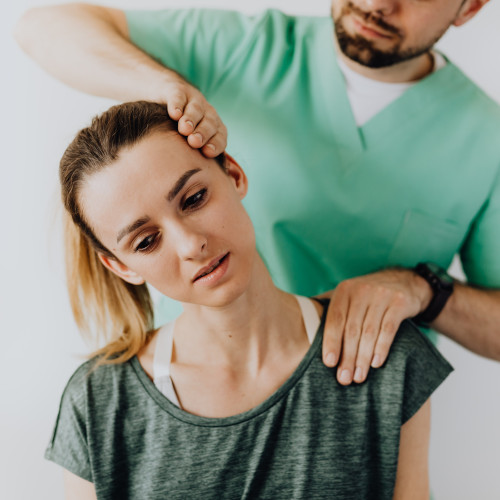
And there you have it: a cyclist's guide on how to foam roll properly without hating it (too much).
Take your time, focus on the critical areas, and don't forget to breathe. It'll make all the difference in the world.
Keen to learn more about stretching and recovery?
We've got more expert tips from Holly, including Essential Stretches for Cyclists, Even More Essential Stretches for Cyclists, and A Cyclist's Ultimate Winter Stretch Guide.
Does your bike also need some TLC, as well as your body?
We'll look after it. The bike, anyway.
